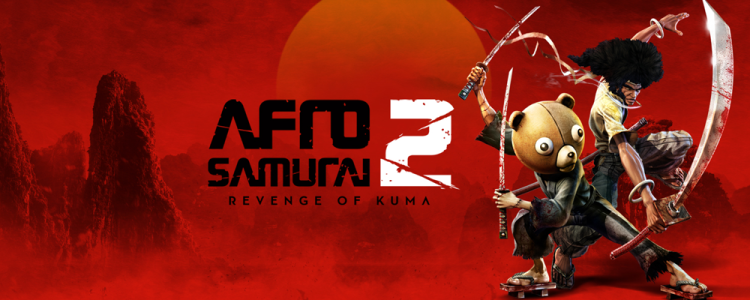Click here for all of GamesBeat’s 2015 Game Developers Conference coverage.
SAN FRANCISCO — Gameplay and narrative can, at times, be at odds with each other. When one overpowers the other, you can wind up killing the entire experience for a significant chunk of the audience.
One example of this issue may be in the original Namco Bandai release of Afro Samurai. The American team behind the scenes put a lot of effort into an intricate battle system that catered to hardcore action-game fans. Although someone like myself may love that sort of design, the team found that a large chunk of their audience wasn’t making any progress in the game. Why? They weren’t able to hang with the gameplay.
Afro Samurai’s project lead, David Robinson, took that criticism to heart. Now at Redacted Studios and having the unheard of opportunity to take the license and assets from the first game with him, he’s looking to try a new approach to the formula with Afro Samurai 2: Revenge of Kuma (coming soon to PlayStation 4, Xbox One, and PC).
Afro gets a button
The most obvious change Robinson is introducing in Afro Samurai 2 is in its combat. In the first game, offensive attacks were mapped to three buttons (hard, light, and kick). Now, everything has been edited down to one button. So, if you want to chop some bad guys, you better start hitting that one button … a lot.
During a hands-off demo, I noticed a combo system of some kind despite the one-button design. Differentiating from one attack string to another wasn’t made very clear. (Maybe it relied on timed presses or directional input?)
Perhaps some of the depth I am looking for lies in the “chip” system? You see, the main playable character in Afro Samurai 2 is Afro’s cyborg brother, Kuma (Afro is actually the antagonist). After Kuma defeats a major character, he literally copies their fighting style onto a chip, which he can access at any time. The concept is a mix of the old ’70s martial arts villain trope and Mega Man.
Kuma can access fighting styles that either suit a specific in-game situation or better fit a preferred way of playing. Loading up Afro’s techniques, for example, activates a move set that is more defensive. Creating a play style that relies on enemies attacking first, allowing for a reactionary response. Where loading Kuma’s style gives the player a move set that is more offensive in nature, better suited for striking opponents right away.
These chipped fighting techniques can also wind up taking damage, which can result in Kuma losing … or forgetting a style. They are being stored inside of sensitive robotic equipment, after all, which in itself is being bashed around by ancient Japanese weaponry.
‘Less is more’
Overall, the entire demo feels more intimate than the original title. Robinson hinted that environments were not going to be as vast as they were in the first game, instead focusing on getting the player into narrative advancing situations quicker. The setting that was on display was a small strip club packed with armed goons to slaughter.
I can see how a less-is-more philosophy could work here. Robinson is incredibly passionate about doing the Afro Samurai narrative justice (bad pun?). Maybe in order to do that properly, the project needs to escape the larger scope that the original title had.
VentureBeat's mission is to be a digital town square for technical decision-makers to gain knowledge about transformative enterprise technology and transact. Learn More

